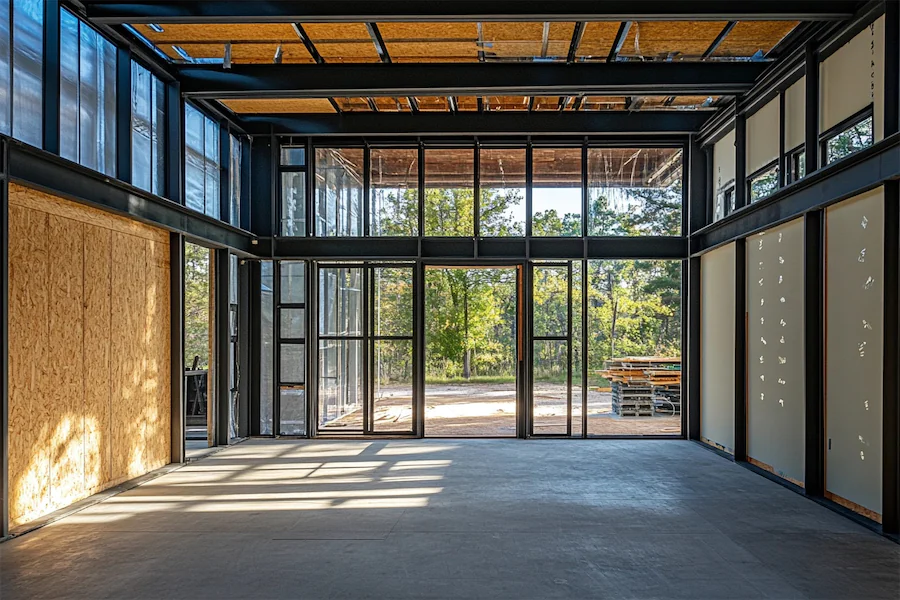Steel frame walls are integral components of modern construction, offering strength, durability, and design flexibility. Utilizing steel studs and tracks, these walls serve as the skeletal framework for various building types, supporting both structural and non-structural elements.
Introduction to Steel Frame Walls
Steel frame walls consist of vertical steel studs secured within horizontal tracks, forming a robust framework for floors, walls, and roofs. This method is prevalent in both residential and commercial construction due to its numerous advantages over traditional materials.
History and Origins of Steel Frame Walls
The adoption of steel framing in construction gained momentum in the 20th century, driven by the material’s high strength-to-weight ratio and resistance to environmental factors. Initially prominent in commercial structures, steel framing has expanded into residential applications, reflecting advancements in manufacturing and building practices.
Key Features of Steel Frame Walls
- Strength and Durability: Steel provides exceptional structural integrity, capable of withstanding significant loads and stresses without warping, splitting, or rotting.
- Design Flexibility: The high strength-to-weight ratio of steel allows for longer spans and more open spaces, enabling innovative architectural designs.
- Fire Resistance: Being non-combustible, steel framing enhances a building’s fire safety profile, potentially reducing insurance costs.
- Dimensional Stability: Steel does not expand or contract with moisture changes, ensuring consistent performance and reducing the risk of structural issues over time.
Applications of Steel Frame Walls
- Residential Construction: Steel framing is increasingly used in homes for its durability and ability to support modern design elements.
- Commercial Buildings: Office complexes, retail spaces, and industrial facilities benefit from steel framing’s strength and adaptability.
- Interior Partitions: Steel studs are commonly employed for non-load-bearing walls, offering ease of installation and modifications.
Considerations When Choosing Steel Frame Walls
- Thermal Conductivity: Steel conducts heat, which can lead to thermal bridging. Incorporating proper insulation and thermal breaks is essential to enhance energy efficiency.
- Corrosion Protection: Ensuring that steel components are adequately protected against corrosion, typically through galvanization, is crucial for longevity, especially in humid or coastal environments.
- Acoustic Performance: Additional measures, such as insulation or resilient channels, may be necessary to achieve desired soundproofing levels, as steel can transmit sound more readily than some traditional materials.
Conclusion
Steel frame walls represent a modern, efficient, and versatile approach to building construction. Their inherent advantages, including strength, durability, and design flexibility, make them a compelling choice for a wide range of architectural applications. By addressing considerations such as thermal bridging and corrosion protection, builders can leverage the benefits of steel framing to create resilient and sustainable structures.
